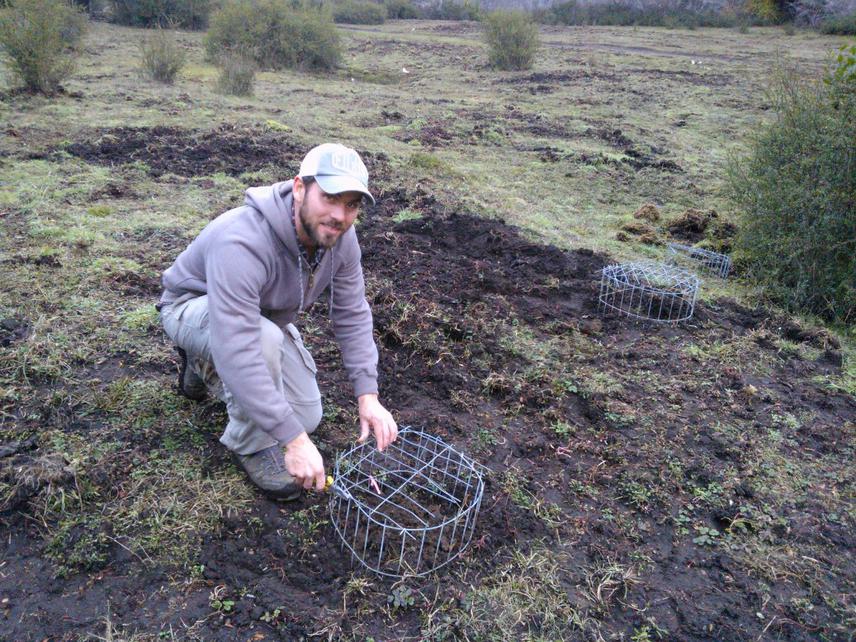Sebastián A. Ballari
Other projects
25 Nov 2009
Impact of the European Wild Boar (Sus scrofa) on the Biodiversity of the Humid Chaco, Argentina
23 Feb 2024
Wetland Conservation and the Impact of Invasive Alien Mammals in Northwest Patagonia
The objective of this project is to evaluate potential synergistic negative impacts caused by the interaction of wild boar and cattle by determine how each species affects the native ecosystem individually and when they co-occur.

Enclosures experiment.
In Argentina non-native ungulates have been introduced as livestock and game species. Two of the most common species, wild boar and cattle, are found in most of the country including in many protected areas. Independently, these species cause substantial negative impacts, including endangering native flora and fauna and affecting ecosystem processes. However, in many areas of Argentina both species are found co-existing, but most studies focus on individual species impacts and few studies focus on interactions or synergy between non-native species. The interaction of two or more invasive species could lead to synergistic negative impacts on the ecosystem that are larger than the sum of the impacts of each species separately or the presence of one species could promote the presence of other (i.e. invasional meltdown).
The Argentinean National Parks Administration prioritizes research on the management of invasions because they recognize the ecological, social, and cultural threat that non-native species pose in protected areas. Additionally, wild boar and cattle are of local and regional economic interests (hunting and livestock), that makes the management of the species more complex. Therefore studies that provide information and tools for and adaptive management of non-native populations to preserve native ecosystems are necessary. In particular this project, carried out in Nahuel Huapi National Park (Patagonia Argentina):
i) will provide information about interactions between wild boar and cattle, two of the most widely distributed invasive ecosystem engineers in the world;
ii) will provide information about the impacts of both species on native ecosystems (e.g. soil alteration, herbivory, non-native seed dispersal);
iii) will provide basic information that could be applied to better manage non-native herbivores in Protected Areas;
iv) will be the starting point for further research involving other non-native species of importance and focus on assessing how the interaction between co-occurring non-native species can alter their impacts or cause direct and indirect undesirable effects (e.g. "surprise effects" or "cascade effect") on the native ecosystem.